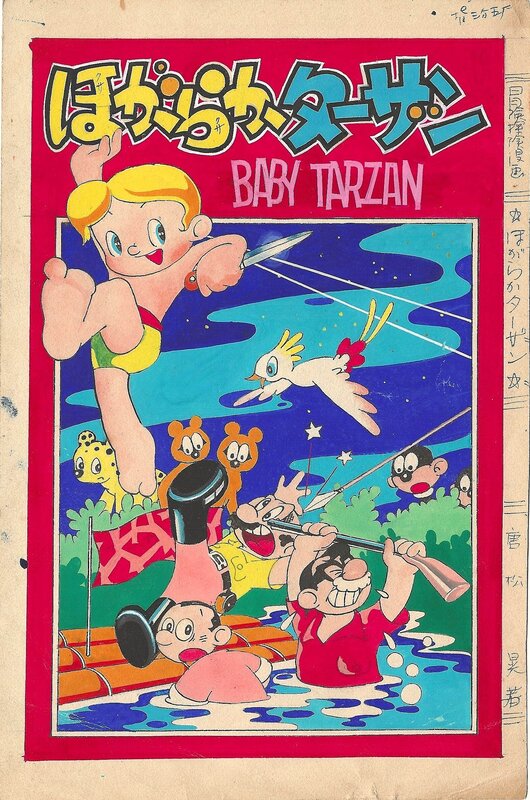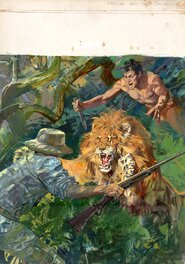In goldgrube 's collection
Description
The term akahon, meaning “red book,” originally referred to children’s books with red covers during the Edo period. It was revived in the Meiji era (pre-WW1) for youth-oriented adventure and comic stories, and from the 1930s onward, became closely linked to a certain type of manga.
Akahon were cheaply made stapled booklets with a cardstock cover. The artwork featured bold reds and oranges printed over black or purple lines, often in a large, eye-catching style.
These books were sold, at very low prices, at rental book stores (kashihon), candy stores, street stalls, festivals etc and basically featured slapstick humor.
Copyright rules were loosely (read; not at all) followed: cover images were re-used without permission, characters were copied from popular manga or foreign media, and famous figures often appeared in unlicensed cameos.
Akahon played a key role in the rise of early postwar manga culture and were an important forerunner to Japan’s modern manga industry.
Akahon were cheaply made stapled booklets with a cardstock cover. The artwork featured bold reds and oranges printed over black or purple lines, often in a large, eye-catching style.
These books were sold, at very low prices, at rental book stores (kashihon), candy stores, street stalls, festivals etc and basically featured slapstick humor.
Copyright rules were loosely (read; not at all) followed: cover images were re-used without permission, characters were copied from popular manga or foreign media, and famous figures often appeared in unlicensed cameos.
Akahon played a key role in the rise of early postwar manga culture and were an important forerunner to Japan’s modern manga industry.
4 comments
To leave a comment on that piece, please log in


